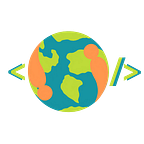IoT In Developing Countries Could Be The Key To Helping Them Out
Written By Ethan Lem
The contrast between the developing world and the industrialized world, is stark. Despite a difference in culture, lifestyle and many other things, there is always the similarity and connection between humans. At the end of the day we are all part of the same species and it is inexorable that we help each other out.
One of the said differences is that in technology. The distance in technological development is massive, and is continuing to grow with the invention of new technology. With development continuing, the price of buying the aforementioned is cheaper and perfect for implementation in developing countries. One of the big pieces of tech that could improve the lives of many is IoT.
IoT (Internet of things), refers to any device or system of devices that collects data and shares it over web servers and software. It uses sensors to collect information, and is sometimes paired with machine learning or other scripts that manipulate data.
Some common uses of IoT include IoT connected houseware that can brew a cup of coffee when the alarm turns on or change your alarm settings when traffic or weather is bad, and other things that can automate mundane or dangerous tasks. Amazon Echo and google home are examples of IoT personal assistants that are commonly available on the market. IoT can also take analytics of hardware and notify you when something needs to be repaired. The possibilities with this are endless.
The UN has composed a list of global issues that concern any citizens of the world. These issues are humanitarian issues such as democracy, climate change, food availability, human rights and anything else of the sort. IoT has already been introduced to solve these problems. It’s been used to distribute food, water, energy, and more. Farmers are using IoT to help with food availability by measuring soil quality or plant growth. Some of these IoT devices are even connected to sprinklers or Irrigation devices that can automate tasks that a farmer usually would do. Plus, third world countries already have a lot of the infrastructure needed to implement IoT into their daily lives, 95% of the world’s population is connected to at least 2G internet, good enough to run simple IoT devices. IoT’s cost efficient and implementable nature makes it the perfect technology to help out the developing world.
In fact, project liquid prep, a Canadian based group from the call for code hackathon, have designed devices to help these farmers out. IoT sensors are used to measure things like soil humidity while cloud storage and cheap phone apps are used to make watering plans and protect crops. The apps are made to run on cheap phones obtainable in third world countries and the sensors cost less than 65 dollars. Furthermore, only one sensor is needed in order to create a watering plan for multiple farms. The UI of the apps is simple and allows for farmers to quickly find out the watering schedules.
IoT has also been applied to other topics on the UN’s list of global issues. One such issue is climate change. IoT is seen as the enabler of implementing green tech, allowing microgrids to be activated when a certain source of energy is not available. Furthermore IoT devices can find faster transportation routes, limiting the time cars are emitting greenhouse gasses. Other IoT powered services could eliminate reliance on non-renewable resources. Paper could be replaced by phone notifications from IoT devices detecting a device nearby. IoT can also be used to monitor carbon emissions, for more accurate taxing. The UN Climate Action Sustainable Innovation Forum reports that only 15 percent of emissions are taxed and more sensors and devices mean more accurate data. Furthermore, IoT optimized production facilities will also help remove a lot of emissions, at a relatively low price. In fact one company called Amerescos says that this technology could remove 0.58 gigatons of greenhouse gas emissions a year.
IoT has great potential to help people, something that developed countries need to do more of. It is a cheap and effective way to help bring tech and programming closer to the third world and gives people a great way to reach out. Every year, an organization known as the call for code, hosts month long hackathons that allow groups of up to 5 people, create software that helps out people in need. Last year, their hackathons focused on that of farmers in third world countries. This year, COVID19 relief, climate change, and systemic racism are all issues of target for the organization. The above group just goes to show that anyone can get together and put together code for the greater good.
If you were recently in the New Years solve at the World of Devs, and your solutions seem practical, then IoT implementation may be the perfect topic for you.
